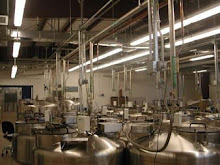Customers occasionally express concern due to a sudden vacuum loss to a liquid nitrogen dewar. Such liquid nitrogen dewars were returned and immediately checked, then revacuumed and LN2 liquid nitrogen tested. Incorrect filling procedures, such as overfilling, were the main causes of the vacuum losses. This article explains why it is very important to follow careful filling protocol. I am addressing the issue in this month's Tech Tip to help explain why overfilling liquid nitrogen dewars during the charging process is damaging to the vacuum integrity of the aluminum liquid nitrogen dewar.

The pumpout plug has two purposes. The main and most obvious purpose is to preserve the vacuum in the liquid nitrogen dewar’s annular space. Provided that a vacuum is present, the pumpout plug will remain inserted into the pumpout body. The second purpose is to perform as a pressure relief plug in the occurrence of a ruinous inner leak. A leak developing to the inner section of the liquid nitrogen dewar would allow liquid nitrogen to enter the annular space, causing the plug to fall out and relieve any pressure build up. When the liquid nitrogen evaporates into a gas and begins to expand, a pressure increase in the annular space is created. Two o-rings seal the plug to the pumpout body, and are coated with a vacuum grease film to guarantee longevity. The pumpouts are then covered with a flexible composite cap which keeps dirt and contaminates from disturbing the o-rings.
Visit Princeton CryoTech for information and products!

No comments:
Post a Comment